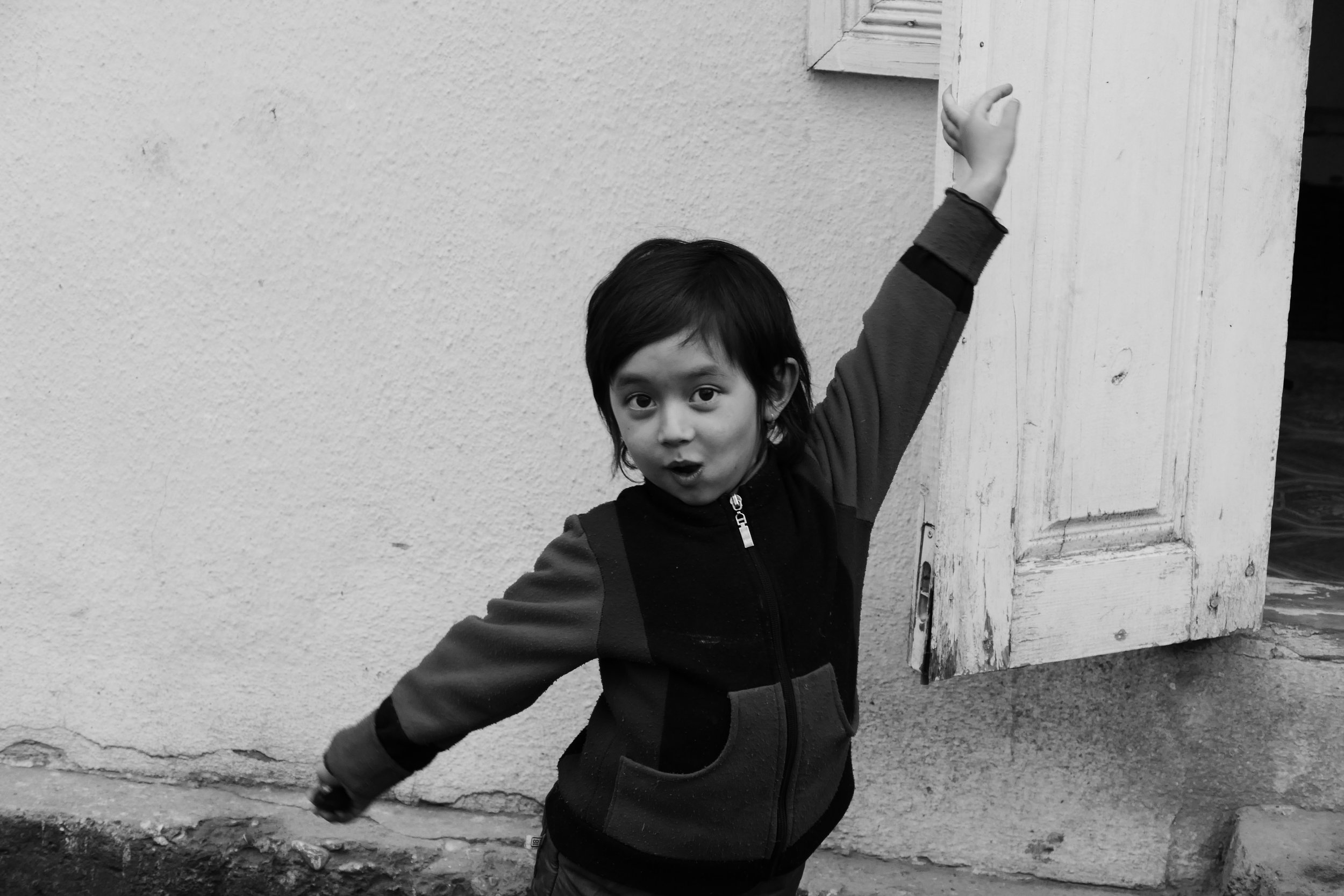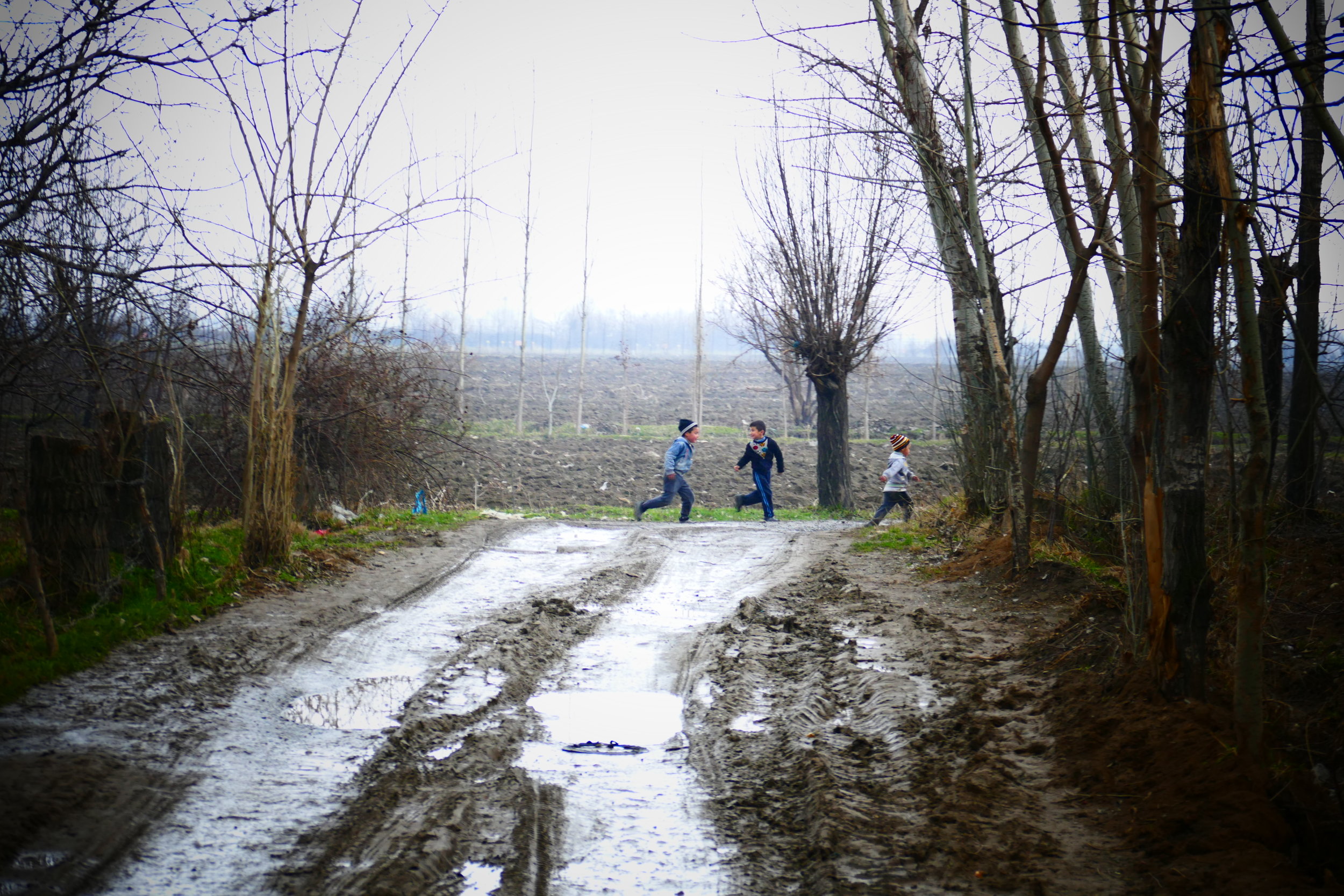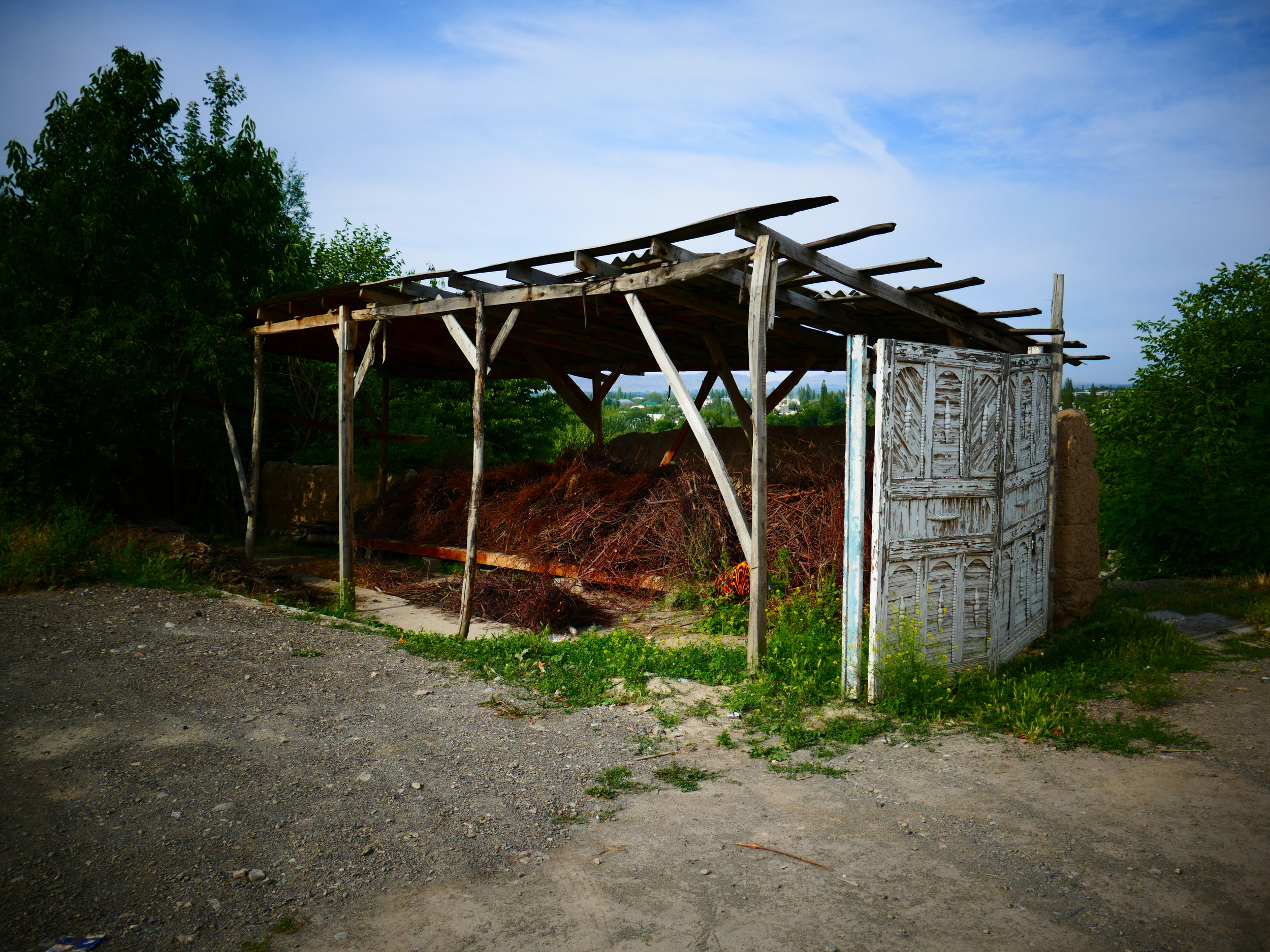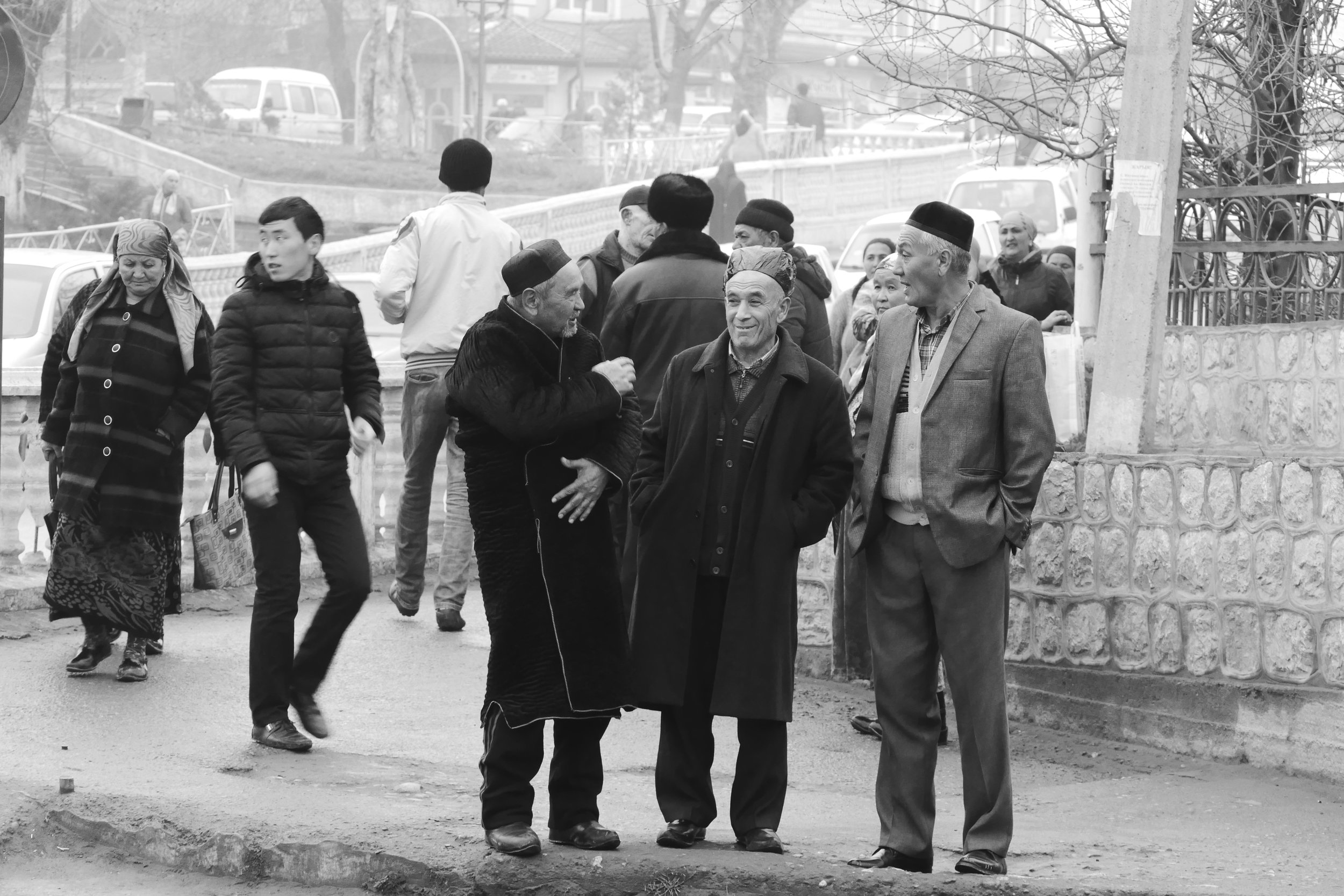
Central Asian Fighters and Global Jihad
CENTER FOR THE NATIONAL INTEREST, JUNE 2025
WITH GAVIN HELF, ASFANDYAR MIR AND ANDREW KUCHINS
Central Asian fighters have been active on both sides of the Russia-Ukraine war, as well as in various military conflicts across the Greater Middle East and beyond. How are these individuals recruited, financed, and organized? One critical node is the Afghan border with the Central Asian states of Tajikistan, Turkmenistan, and Uzbekistan. Has their role and influence in global jihadi theaters increased or declined in recent years? And where does radicalization typically occur: within Russia as guest workers, in their home countries, or elsewhere?
On June 23, the Center’s Central Asia Connectivity Project invited a distinguished panel of experts to address these and other questions.
Trapped between Three Conflicts, Central Asian Migrants Face Problems We Can No Longer Ignore
ponars eurasia policy memo no. 909 (pdf)
With Stevan Weine
In late June 2024, the Department of Homeland Security announced it had identified over 400 mostly Central Asian migrants they tied to a people-smuggling network with suspected links to ISIS. Only weeks before, federal agents had arrested eight Tajik nationals in New York, Los Angeles, and Philadelphia, with reported ties to terrorism and who had crossed the U.S. southern border illegally. This is the most tangible indicator yet that concerns have re-ignited in the United States about the potential terrorist threat from Central Asia, which last became an issue on Halloween of 2017 when an Uzbekistani man from Tashkent murdered eight people on behalf of the Islamic State of Iraq and Syria (ISIS) on the west side of Manhattan, in New York’s deadliest terror attack since 9/11.
These recent arrests follow a string of disrupted terror attacks linked to Central Asian migrants in alleged cells of the offshoot group, ISIS-Khorasan (ISIS-K), in Germany, Austria, and the Netherlands in just the past few years. These are a sober reminder that despite the urgency of the wars in Gaza and Ukraine, we cannot turn our backs on the desperate situation many migrants from Central Asia face by merely hoping that they will not spill over to our own lives.
Operation Jusan in Year 4: Understanding and Addressing Present and Future Needs
Center for research and evidence on Security Threats (CREST - UK)
with Gulnaz Razdykova, B. Heidi Ellis, Robert Orell, Dina Birman, Stevan Weine
This needs assessment report presents evidence and analysis gathered from women beneficiaries of Operation Jusan and from practitioners who support them and offers recommendations to address their present and anticipated future needs. The data gathered includes a survey of 109 women and two workshops with women beneficiaries and practitioners.
We found that most women reported making excellent progress in their reintegration and rehabilitation, but for some women there were reported weaknesses in terms of housing and financial needs, career opportunities, children being bullied at school, children not at age-appropriate grades, parenting challenges, difficulty with husbands transitioning out of prison, and need for trauma mental health care.
Priority challenges include: Mothers with high burdens and inadequate support; Jusan children becoming teenagers; Husbands' release from prison, and; Children not finding school or job success.
We conclude that exiting violent extremist conflict involves changing ideology, but also much more. There is a need for an explicit theory of change with measurable outcomes to guide policymakers and practitioners. Practitioners need to develop a deeper awareness of trauma, triggers, behavioral consequences, avoiding retraumatisation and promoting recovery and resilience.
UK Parliament Foreign Affairs Committee Oral evidence: The UK’s engagement in central Asia, HC 1158
Expert witness testimony, 27 june 2023
Uzbek Women in the Syrian Conflict: First-Person Narratives and Gendered Perspectives on Mobilization and De-Mobilization
In Negotiating Gender in Central Asia: The Effect of Gender Structures and Dynamics on Violent Extremism, Peter Knoope and Seran de Leede eds (GWU 2022).
To date, the literature on Central Asian women who have left zones of conflict in Syria and Iraq has relied heavily on secondary sources, government accounts, interviews with family members or neighbors, or on interviews with women who have returned to their home country and are under observation by security services (and their home social networks into which they are attempting to re-integrate). This paper provides the perspectives of women formerly involved in armed groups telling their own stories of mobilization and demobilization while still living in a third country. The respondents in this study were all given the opportunity to speak on the condition of anonymity, without the fear of potential retribution or repercussions for their families at home.
Foreign Fighters, Returnees and a Resurgent Taliban: Lessons for Central Asia from the Syrian Conflict
Security and Human Rights
Volume 32: Issue 1-4 (Brill 2022)
This essay surveys the recent history of Central Asian mobilization to foreign conflicts and insurgencies and offers discussion of the potential for a new wave of migration that the fall of the Afghan government and a victorious Taliban insurgency could present for the region. It argues that new developments have increased the importance of understanding the causes of conflict migration from Central Asia to both ensure successful reintegration of returnees and prevent a new wave of conflict migration. This contribution presents evidence that a one-dimensional focus on ideological or theological motivations for past waves of conflict migration is a poor explanatory mechanism for the broader conflict. A complex, localized, and multi-factor approach provides a much better explanatory model for mobilization to both local violence and foreign conflict.
On Jihadist ideology, European populism and the Christian far-right
Interview with Marlene Laruelle for GWU’s Illiberalism Program, December 2020
“I’ve come to feel uncomfortable with the ‘pathways to radicalization’ model in general, because it assumes that people become radicalized as individuals and therefore join a radical group dictated by their ideology. My experience from looking at individual cases is that just as—or more—often, it works the other way around: they join the group first for other reasons and only within the group may become ‘radicalized.’”
Terrorism without a God: Reconsidering Radicalization and Counter-Radicalization Models in Central Asia
GWU Central Asia Program, September 2019
Foreign religious beliefs and practices are consistently cited by regional governments and “common sense” public discourse as the primary causal driver for Central Asian participation in violent extremist groups. Drawing upon three related sets of fieldwork and interview data—conducted between August 2016 and September 2018 in Kyrgyzstan, Kazakhstan, and Tajikistan—this paper argues that mobilization of Central Asians to the conflict in Syria was rarely linked by respondents or available evidence to foreign missionary activity or external religious groups, and, more importantly, was not evenly distributed in terms of geography. Instead, mobilization in these three countries was significantly concentrated in identifiable zones wherein residents cited unresolved grievances that they framed in terms of “justice/injustice” and lacked alternative mechanisms to resolve or negotiate. This paper outlines an approach to conflict mobilization and socialization from the literature on ethnic conflict and non-Islamist terrorism, which focuses on personal social networks and perceived grievances as key factors that better explain the full spectrum of successful recruiting as well as its geographic concentration. As French scholar Olivier Roy found in patterns of recruiting to Syria in Europe, this paper argues that recent data support the conclusion that, in Central Asia, we should not be discussing the “radicalization of Islam,” but, rather, the “Islamization of radicalism.”
A ‘Hotbed’ or a Slow, Painful Burn? Explaining Central Asia’s Role in Global Terrorism
CTC Sentinel, Issue 17/7 July-August 2024
with edward lemon
After a string of terrorist attacks in Russia, Iran, and Afghanistan involving Central Asian citizens, as well as foiled plots and arrests in the United States, Germany, the Netherlands, Italy, and Turkey, Central Asia is once again in the spotlight as a supposed center of terrorism. But this narrative of a constantly growing threat does not fit well with reality. Compared to only a decade ago, when over 4,000 Central Asians traveled to Syria and Iraq to join militant organizations, the levels of recruitment and volume of messaging have decreased substantially. To explain terrorism from Central Asia or measure the potential threat, the authors contend it is important not to overly focus on the narratives in slick recruiting videos that only reach a few hundred people. Given the lack of evidence for a new wave of mass recruiting, the authors suggest that the recent spike of attacks and arrests is the ‘long tail’ of the Islamic State. After the collapse of the Islamic State’s territorial holdings in Syria in 2019, many operatives migrated to Europe, forming sleeper cells, some of which have been disrupted in the past year. Mobilization of Central Asians also remains primarily an issue tied to migration. With the notable exception of Kazakhstan where internal migration and displacement play key roles, Central Asian participation in terrorist groups remains primarily an issue that manifests itself outside the region. Instead of focusing primarily on online recruiting, the authors argue one should focus on the factors that led to mobilization to Syria and Iraq a decade ago and that have been exacerbated in recent years, especially in Tajikistan, including crackdowns on religion, corrupt ineffective governance, high levels of migration, and well-established terror networks that are holdovers from the peak of the Islamic State.
Webinar: The Crocus City Hall Terror Attack and Its Repercussions for Central Asia
HARVARD’S DAVIS CENTER FOR RUSSIAN AND EURASIAN STUDIES AND THE OXUS SOCIETY (APRIL 2024)
While little evidence has yet been presented for who committed the March 22 terror attack outside Moscow and why, it will clearly have serious repercussions for Central Asian migrants in Russia and for Russia-Central Asia relations. The arrest of four Tajik men has triggered a wave of harassment and renewed media commentary on Central Asia and its people as a source of danger. The suspected ISIS-K connection, which fits a pattern of recent attacks and arrests, brings attention back to the problem of armed Islamist groups and insurgencies from Central Asia and the Caucasus and Russia's role as one of their primary targets. This panel will consider various implications of the terror attack for Central Asians and Central Asia, focusing on the issues of migration, counter-terrorism, and transnational repression. With Nargis Kassenova, Edward Lemon, Yann Matusevich, and Malika Bahovadinova.
Podcast: Reintegration
Going to Extremes - UNOCT International Hub on Behavioural Insights to Counter Terrorism Podcast (2023)
In the ninth episode of our podcast, Noah Tucker, program associate at George Washington University's Elliot School of International Affairs Central Asia Program, discusses reintegration of former terrorist fighters in Central Asia. Tucker explores the role of trauma-informed approaches to reintegration and rehabilitation, the importance of community support, as well as the right messaging for successful reintegration campaigns. He also touches on the role of gender and participation of women from Central Asia in terrorist groups.
Podcast: Can Violent Extremists Leave their Pasts Behind?
New thinking for a new world, the Tallberg Foundation (October 2023)
Guest host Michael Niconchuk looks for answers with experts Juncal Fernandez-Garayzabal and Noah Tucker. Violent extremism is growing globally. It doesn’t know religion or creed. Where once it was confined to specific ideology or identity groups, at least in public discourse and discussion, now it appears across societies, across cultures and across borders. Violent extremist ideologies and actions are becoming part of the global fabric. Why do people get involved in this type of violence? How can they disengage? Can violent extremists be helped to reenter society integrated in healthy, socially positive, empowered ways to engage as productive and peaceful citizens? In this episode of New Thinking for a New World, guest host Michael Niconchuk looks for answers.
What can we learn from exploring the traumatised past of returnees?
Center for reserach and evidence on security threats, CREST Security Review, Issue 15 December 2022
Noah Tucker shares his insights on how trauma experienced by returnees before the Syrian conflict shaped their pathways into it and how it can complicate their return. From the Centre for Research and Evidence on Security Threats (UK).
What Happens When Your Town Becomes an ISIS Recruiting Ground? Lessons from Central Asia about Vulnerability, Resistance, and the Danger of Ignoring Perceived Injustice
GWU Central Asia Program, July 2018
According to estimates produced by the Soufan Group in late 2017, the conflict in Syria and Iraq that began in 2012 drew more foreign fighters from the former Soviet Union than from any other region of the world, including the Middle East. Long-standing networks connecting Chechen and Dagestani fighters to inter-national jihadi groups make it comparatively easy to understand the number of fighters from the Russian Federation in the Middle East, but the numbers of Uzbeks, Kyrgyz, Kazakhs, and Tajiks are harder to explain. How did groups in the Middle East that primarily recruited in Arabic and English draw Central Asians at all, and what did Central Asian volunteers believe awaited them in a foreign civil war unfolding in two countries to which they had no cultural, linguistic, or historical ties? On a more local level, why do countries show distinct regional and demo-graphic patterns that favor some of their most remote regions? “Hotspots” include the isolated mining and oil-drilling cities in the Kazakh desert (Zhezkazgan, Aktobe, Atyrau), the agricul-tural deep south of Tajikistan (Khatlon province), and south-ern Kyrgyzstan’s Ferghana Valley communities, which are cut off from the rest of the country by a high mountain range and were isolated from surrounding states by strictly closed borders during the height of the recruiting period (2012–2015).
Podcast: Deconstructing Islamic State’s Appeal in Central Asia
International crisis group’s War and Peace podcast, 2020
No overwhelming single factor accounts for such a huge number of people going to fight with the Islamic State. “For every 10 people who join, there are 10 different life stories, and often 10 different reasons”, Noah explains.
But the deep inequalities found in Central Asian countries can help explain. After the collapse of the Soviet Union, Central Asia underwent rapid modernisation and radical economic changes. While not unique to the region, the additional challenge of constructing a political system from scratch produced clear winners and losers while whole sections of society were left behind with no mechanism for changing the balance. The Islamic State offered a different path to addressing these injustices, an alternative theory on how to construct a government and distribute resources more fairly.
Noah, Olga and Hugh go on to examine the gendered element, the role of ethno-nationalism as state ideology and much more on this week’s episode.
The Shrinking Space For Religion In Central Asia
Podcast
The thing the governments in Central Asia fear the most is religion. Secular opposition there has been nearly eliminated and in its place religious opposition has appeared.
Only a very few people in Central Asia are given to joining Islamic extremist groups. But were one to judge from the actions of the region's governments and security forces, it would easy at times to get the impression there was an imminent threat to the state.
Moderating the discussion was RFE/RL Media Relations Manager Muhammad Tahir. From London, Felix Corley, the editor of Forum 18 News Service, an agency monitoring religious freedom in the former Soviet republics and Eastern Europe, joined the talk. Participating from Washington, D.C., was Dillorom Abdullaeva of Tashabbus, a group formed by young lawyers in Uzbekistan to help protect the rights of people there. And in case you didn't notice, we have Noah Tucker from Registan.net working with us at RFE/RL now, so he was in the studio in Prague with me for the discussion.
Identifying Islamic Education and Indigenous Counter-Extremism Resources in Kyrgyzstan
GWU Central Asia program April 2017
This paper is based on focus group research and fieldwork with self-identified Muslim Uzbeks in Aravan (a geographically isolated Uzbek city in Southern Kyrgyzstan that has had one of the highest regional rates of recruiting to the conflict in Syria) conducted in late 2016. Focus groups and interviews were designed to identify what resources Uzbek minority Muslims—who have lost many of their imams and experienced significant disruptions in their civic community structures overall since the violence in 2010—turn to for Islamic knowledge, to answer theological questions, and to arbitrate religious disputes—including to evaluate extremist and militant messaging
Series: Public and State Responses to ISIS Messaging in Central Asia
GWU Central Asia Program, February 2016
This series of papers examines both ISIS recruiting tactics, narratives and messages as well as public/state responses to ISIS messaging and the public sphere context in which messaging and counter-messaging take place in each state (and language) in Central Asia, including Turkmenistan.
Central Asian Involvement in the Conflict in Syria and Iraq: Drivers and Responses
united states agency for international development, may 2015
This report aims to add an evidence-based perspective to the discussion of foreign fighter recruitment of Central Asians to the conflict in Syria and Iraq and to evaluate what the trends identified in mobilization of this specific community might tell us about our understanding of the drivers of violent extremist or insurgent (VE/I) mobilization. The Syrian mobilization, which heavily uses social media networks for its messaging, may also help illuminate ways that the rapid spread of digital communication technology may have shaped some of these drivers since USAID/MSI originally published the Guide to Understanding Violent Extremism in early 2009. This report may also provide a useful case study for analysts of extremist mobilization comparing the style, narratives and strategies used by al-Qaida (AQ) and its affiliate in Syria (the Jabhat al Nusra or ANF) and the Islamic State of Iraq and al Sham (ISIS, also known as the Islamic State) — which was disavowed by al-Qaida leadership in the spring of 2014.
Domestic Shapers of Eurasia's Islamic Futures: Sheikh, Scholar, Society and the State
the davis center, harvard university 2015
[Book chapter, Harvard/Carnegie Islam in Eurasia Project. Thomas W. Simons, ed.]. The common interpretation of Islamic revival in Central Asia is that most groups (and individuals) fall solidly into blocks that are “good, indigenous, and moderate” or “radical and foreign.” This project argues that most religious groups in Central Asia combine elements of different spiritual practices, and that labels like “good, indigenous, and moderate” or “radical and foreign” are used primarily for political ends; that for as much as believers from both ends of the spectrum argue with one another, they have more in common than not; that both ends of the spectrum are mostly apolitical aside from advocating an increased role for Islam in social and political life; and that while foreign actors and ideas have influences, both of the broad trends we identify have a long history in domestic religious debates.
Violent Extremism and Insurgency in Uzbekistan: A Risk Assessment
United states agency for international development, 2014
This report draws on and synthesizes published sources to assess the current and prospective risk of violent extremism and insurgency (VE/I) in Uzbekistan. It does not attempt to offer an in-depth analysis of VE/I in Uzbekistan, but rather seeks to provide an overview of key drivers, mitigants and trends in order to inform future USG policies and programs. The framework used for this assessment is based on the Guide to Drivers of Violent Extremism, produced for USAID by Management Systems International (MSI).
Up to 96.3% of Uzbekistan’s population self-identify as Muslims. Almost all are Sunni Muslims who describe themselves as followers of the Hanafi school that enjoys official support. External displays of religiosity, however, are carefully regulated and discouraged. The vast majority of Uzbekistan’s Muslims do not participate in formally organized religious structures or attend mosque regularly (9% attend weekly), but Islam is increasingly a frame of reference for moral decisions and debates and an important part of Uzbek identity. This unusual dichotomy between public religious practice and private belief has emerged as a result of authoritarian controls over civic and religious freedom

Children play against the background of muddy cotton fields in Nariman (Osh Province), Kyrgyzstan

Outside the Friday Mosque, Uch Korgon (Batken Province), Kyrgyzstan

Outside the city bazaar, Aravan (Osh Province), Kyrgyzstan